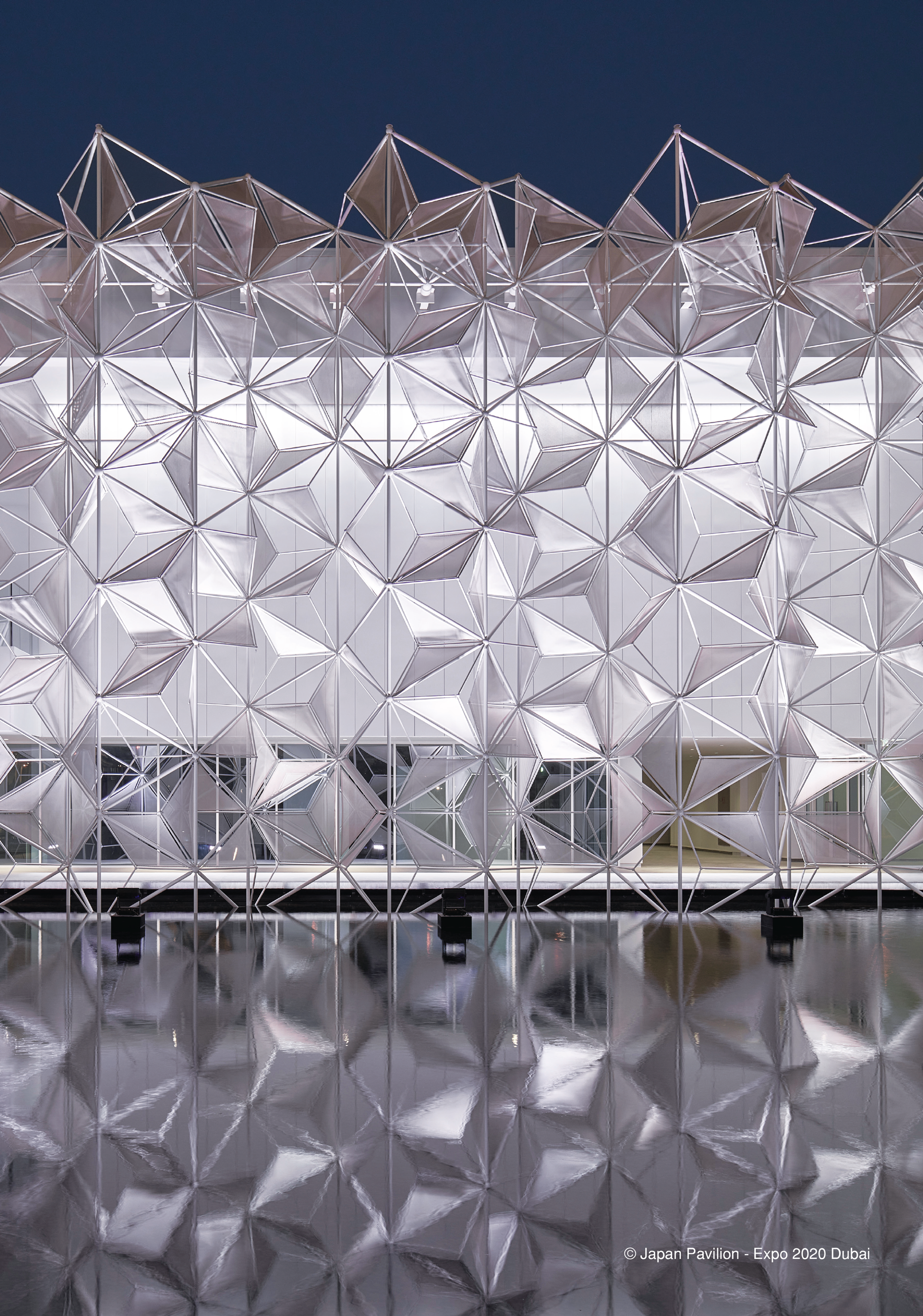Japan Pavilion
EXPO 2020 Dubai
Japan
Japan Pavilion “Where Ideas Meet”
NAGAYAMA Yuko , Born in 1975, Yuko Nagayama completed Showa Women’s University in 1998. After working at Jun Aoki & Associates, she established Yuko Nagayama & Associates in 2002. Representative works include Louis Vuitton Kyoto Daimaru, a hill on a house, Teshima Yokoo House , Central Garden – Goddess of The Forest, Japan Pavilion Expo Dubai 2020. Her Accolades include: JIA Young Architect Award 2014 “Teshima Yokoo House”, Yamanashi Cultural Prize of Architecture 2017, JCD Design Award 2017 Silver Award, Tokyo Architecture Award 2018 Excellent Award “Central Garden – Goddess of The Forest”, Design Award for Light and Lighting 2021 Grand Prize “Tamagawa Takashimaya S.C.
Grand Patio” etc. Currently she Is working on a high-rise building in Kabukicho, Shinjuku (2022) and Tokyo Torch in Tokiwabashi.
Host country/Organizer: Ministry of Economy, Trade and Industry
Co-organizers: Ministry of Internal
Affairs and Communications; Ministry of Education, Culture, Sports, Science and Technology;
Ministry of Agriculture, Forestry and Fisheries; Ministry of Land, Infrastructure, Transport and Tourism
Participating Organization: Japan
External Trade Organization
Architectural concept: Yuko -agayma and NTT Facilities
Exhibition concept: Consortium
of Murayama Inc. and Tanseisha Co Ltd.
Main exhibition implementation: NUSSLI
“The characteristic façade combines arabesque and origami motifs to represent the longstanding historical ties between Japan and the Middle East” The Japan Pavilion concept was envisioned to provide visitors with “an impressive experience of the world and how resolutions can be achieved through harmony between people, ideas and technology”. A remarkable design strategy was incorporated to epitomise Japan’s diverse historical influences, its ancient network of the Silk Road and its significant respect for other cultures and traditions.
Designed by Yuko Nagayama, Japan Pavilion uncovers similarities between Japan and the Middle East.Centred around the theme of connection, Japan Pavilion unfolds a tridimensional geometrical lattice design inspired by the commonalities of traditional Japanese and Arabic patterns. Influenced to

explore cultural and technological connections between Japan and the UAE, Yuko combines traditional Arabesque patterns, Japanese Asanoha designs and the art of origami to form an integral aspect of the façade. The structure enveloping the pavilion is a reference to the Japanese art of Origata, gift wrapping. Technological connection is represented by element of water incorporated as reference to water technology long utilized in the Middle East.
Emphasizing on Sustainability, key focus for Expo 2020 Dubai, the pavilion’s cooling system incorporates environmental-friendly techniques derived from both cultures. The thin paper like texture of the façade protects the pavilion from direct sunlight. While the shallow pool of water in the front helps cool the area, a natural cooling system with water mirrors for evaporative cooling method as well as the geometrical lattice serving as the structure and environmental filter.



